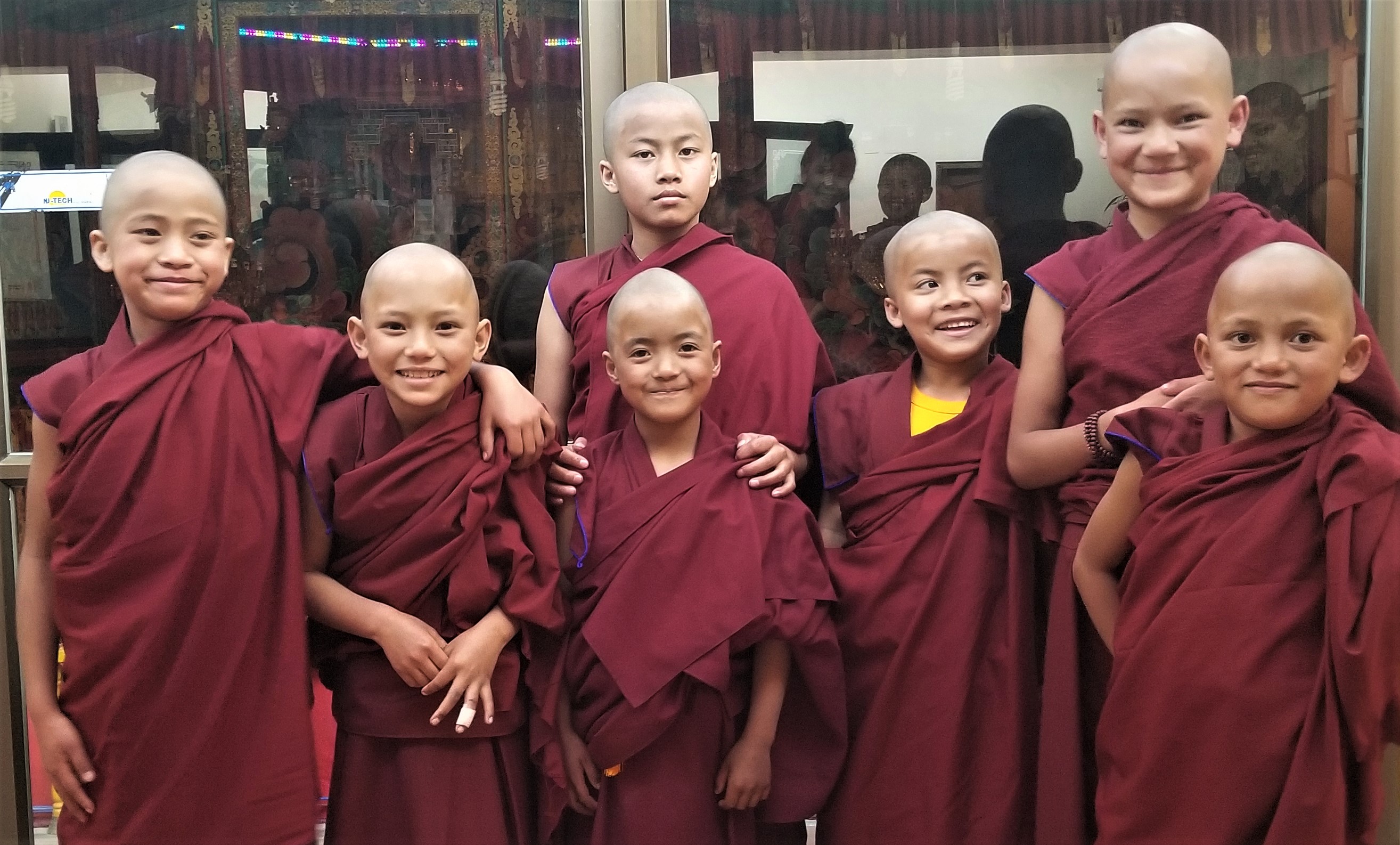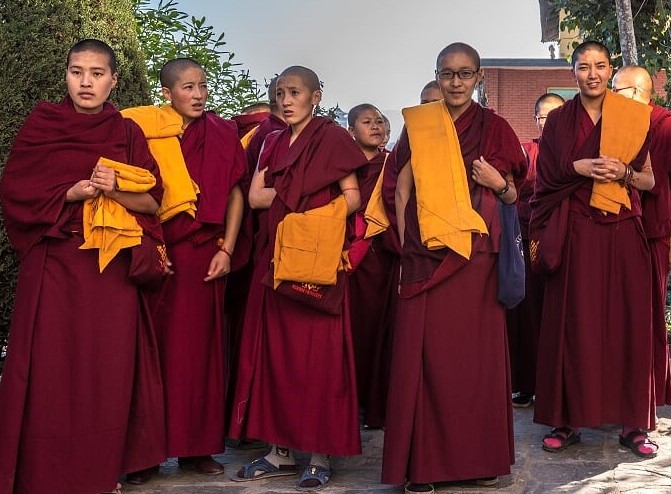The first community of monks at Kopan was established by Lama Yeshe and Lama Zopa Rinpoche in 1972. At that time 25 monks from the Solu Khumbu region moved to Kopan and, together with a handful of monks already living there, established a program of study, meditation, and communal living In.1981 they were joined by two young Tibetan women ordained by Lama Yeshe. And were quickly joined by other young women, mainly from Tibet, that wishes to follow. They participated fully in the education program of the young monks, studying, memorizing and debating – things they were never able to do in Tibet.
 |
Now nuns from the age of seven from all over Nepal and other Himalayan countries are living at Khachoe Ghakyil Ling Nunnery, studying, praying and practicing. One of the priorities of t nunnery is to nurture the aspirations of young women who wish to live their lives in the footsteps of the Buddha. You are welcomed into this community as a visitor and student. We request you to respect our way of life and our values.
Monastic Community – What does it mean?
The Sangha, the community of Buddhist monks and nuns, goes back to the time of the Buddha, nearly three thousand years ago. By becoming a monk or a nun, one abandons the ways and appearance of a layperson or a householder and adopts the appearance and ways of an ordained person, a commitment made when accepting the ordination vows.
Historically, Sangha members are expected to preserve the doctrine and monastic discipline according to the teachings of Shakyamuni Buddha. They are also expected to be a living example for the laity, and to serve as a "field of merit" for lay followers, providing laymen and women with the opportunity to earn merit by supporting the livelihood of the monastic community. In return monks and nuns are expected to live an austere life focused on the study of Buddhist doctrine, the practice of meditation, and the observance of good moral character. The disciplinary regulations for monks and nuns are intended to create a life that is simple and focused, rather than one of deprivation or severe asceticism. Read more about the historic background and relevance of Monastic Communities in the next article.
 |
Celibacy is of primary importance in monastic discipline; it is seen as being the preeminent factor in separating the life of a monastic from that of a householder. Depending on the local tradition and the strictness of observation, a monastic may eat only one meal a day, provided either by direct donations of food from lay supporters, or from a monastery kitchen that is stocked (and possibly staffed) by lay supporters.
More and more of the monasteries now offer not only monastic training to their residents, but an all-round school education to prepare the monks for a life a outside the monastery walls, serving their fellow human beings.
Not all nuns are interested in pursuing a scholastic career. After finishing grade ten in the monastery school, some of them continue their monastic life by offering service to the monastery in a variety of ways. Those who wish to dedicate their lives to the pursuit of religious activities may do so under the guidance of qualified teachers and meditation masters. But regardless of their small or large purposes, they all serve to preserve the teachings of Shakyamuni Buddha in its purest form for future generations.
Being a Buddhist monk or nun is truly a meaningful and worthwhile way to spend one's life, and to be of benefit to others. We are very fortunate that the monastic tradition, started by Shakyamuni Buddha more than 2500 years ago, is still alive today. Not only is there great benefit for oneself in being ordained, the life of a Buddhist monk or nun also carries a deep responsibility for oneself and for others.
Sangha Jewel
" We follow the Buddha, who has compassion for all, who has shown the complete path to achieve perfect complete happiness and freedom. The foundation of our practice is not to harm others or ourselves and to help benefit others as much as we can. For that purpose we shave our head and wear robes. This symbolizes our goal of take freedom from the cycle of death and rebirth and from the cause of all afflictive emotions, such as ignorance and attachment, which bring all the pain and confusion in this life."

